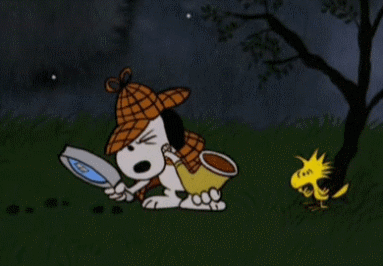All right everyone.
This month has been kind of a doozy. Although this is not a newsletter about me or my life, it kind of tangentially is in that I’m currently writing this in between screenings of Rahr (the Lion King) and New Rahr (Madagascar) hosted by my 2-year-old niece, who I haven’t seen since she was little more than a bean bag with a spine.
After a multi-continent move and a less-than-fun quarantine, let’s just say this month’s been a weird one. But it was my idea to start a newsletter while underemployed in the middle of a seemingly ceaseless pandemic, so that’s on me.
Anyway, this month’s letter is going to be a little different, in that it’s gonna be in 4 weekly installments. (A weekly newsletter? In this economy?) So, welcome to Part 1. Part 2 is coming next Wednesday (where I’m writing from, it’s still technically Wednesday.)
We’re going to keep it a little looser, which I think is fine, mostly because writing online doesn’t feel like being “in public”, it feels like writing little letters to my sisters and then someone from the Netherlands likes one of my tweets. (Hi guys!)
That’s part of what I’ve been thinking about this month anyway, though: what writing is personal and what writing is public, and how we reveal ourselves, on purpose or otherwise, to ourselves and others.
I don’t know about you, but I’m nosy as hell.
I always want to know what people are doing when they think no one’s looking, which I think is why I always write as though I’ve got a perma-audience, even in my personal notes and diaries. I’m always imagining some future archivist going “get a load of this lady”, just like I do when I’m going through someone else’s papers. It’s fun to imagine that someone might try to make sense of my thoughts, years into the future.

But what if you could look not just at what someone wanted you to see - their published works, their edited diaries, their daily schedule - but at the most basic foundations of their intellectual process? What if you could get a pre-history of not just their ideas and their thoughts, but their interests, hobbies, inclinations, and casual tendencies? Did you ever want to go through John Milton’s browser history?
Meet the commonplace book.
Let’s be honest. The term ‘commonplace book’ is just terrible marketing.
It’s in the name, right? What even is a commonplace book? Sounds just like an everyday regular degular book, a moldy old paperback that no one really cares about (until it gets weeded and put into a dumpster, at which point it becomes a Full-Bore National Crisis, but that’s a story for another time.)

When people come into rare book and manuscript libraries, they often want to see the Biggest Oldest Grandest thing. The fancy book of hours, the book someone important once held, the book with all the Cultural Importance. And those are very good books, and we love them.
But even as a librarian and someone interested in book history, the “commonplace” part meant that it took me awhile to warm up to commonplace books. For me, they ranked just below almanacs and just above municipal budgets. (Both of which are fascinating and can rank anywhere on your personal list of Old Stuff to Look At, no judgment here).
Which is silly, because what I love most are books with notes in the margins - added opinions and arguments and stains and globs of gooseberry jam. This is why I love recipe books and how-to books especially, but also diaries, letters, journals and early manuscript drafts.
Once I realized what commonplace books really are, I got hooked. They’re not quite journals, not quite scrapbooks, but also kind of both. Commonplace books are personal notebooks full of interesting snippets and quotations from other authors, thinkers and poets, known as “commonplaces”, that are all held in a common place (the book itself.) They can also include songs, pressed flowers, sketches, or whatever else catches their owner’s fancy.
Each one is an unintentional self-portrait. We think of people showing themselves through their writing or creative products, but they also show themselves through what they choose to write down and hold onto. What speaks to them? What are their influences? What are the words and songs and ideas they just HAD to take with them into the future? It’s like one of those negative space pictures they make you do in Intro to Art.
It’s personality revealed by implication, which for the nosier among us, is like catnip. Commonplace books aren’t commonplace at all. They’re unique portraits of their creators’ inner desires, thoughts, and whims, a private repository of everything that struck them as important and worth holding onto.
So, from Octavia Butler and David Sedaris to May Bragdon and John Milton, from Lewis Carroll to David Bowie, we’ll be taking each week in September to dive into the creative worlds that thinkers, famous and everyday, built for themselves.
We’re going to talk about choice and discovery, about how Spotify is the Pinterest of music, and how Pinterest is the Walmart of creativity, and whether anyone’s even on Tumblr anymore (spoiler alert: we totally are.)
And we’re going to figure out what commonplace books really mean to us today. Are they a technical aide-memoire for Great Men of Letters? Are they frivolous collections of pressed flowers and sappy poetry? Are they a lifehack that lets you get “compound interest on your ideas”? Or are they just a form of proto-social media from before we had the Internet? Whatever they are, we’ll get into it.
See you next week!







I love both the idea of a commonplace book and that anyone is still on Tumblr. What's happening there these days other than my half dozen defunct projects?